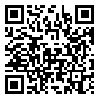Volume 14, Issue 3 (12-2021)
ijhe 2021, 14(3): 487-498 |
Back to browse issues page
Download citation:
BibTeX | RIS | EndNote | Medlars | ProCite | Reference Manager | RefWorks
Send citation to:



BibTeX | RIS | EndNote | Medlars | ProCite | Reference Manager | RefWorks
Send citation to:
Alizadeh Z, Dindarloo K, Heidari M. Assessment of health risk attributed to heavy metals of settled dust in the elementary schools of Bandar Abbas. ijhe 2021; 14 (3) :487-498
URL: http://ijhe.tums.ac.ir/article-1-6570-en.html
URL: http://ijhe.tums.ac.ir/article-1-6570-en.html
1- Department of Environmental Health Engineering, School of Health, Hormozgan University of Medical Sciences, Bandar Abbas, Iran
2- Department of Environmental Health Engineering, Faculty of Medical Sciences, Tarbiat Modares University, Tehran, Iran AND Social Determinants in Health Promotion Research Center, Hormozgan Health Institute, Hormozgan University of Medical Sciences, Bandar Abbas, Iran ,moheidari@modares.ac.ir
2- Department of Environmental Health Engineering, Faculty of Medical Sciences, Tarbiat Modares University, Tehran, Iran AND Social Determinants in Health Promotion Research Center, Hormozgan Health Institute, Hormozgan University of Medical Sciences, Bandar Abbas, Iran ,
Abstract: (1332 Views)
Background and Objective: Heavy metal (HM) pollution of settled dust on the interior surfaces of elementary schools may affect the health of young students; hence, the health risk of such pollution should be assessed. Therefore, the aims of this study were to measure the content of heavy metals in the settled dust in the indoor of elementary schools in Bandar Abbas and to assess the attributed health risks.
Materials and Methods: In this study, dust samples were collected from the interior surfaces of elementary schools in Bandar Abbas. Settled dust samples were digested using aqua regia solution and then their metals contents were measured using ICP-OES. To assess the health risk attributed to this pollution, daily intake doses through ingestion, inhalation and skin absorption routes were estimated. Then, non-carcinogenic and carcinogenic risks were calculated considering the daily intake doses and toxicity factors.
Results: The average concentrations of arsenic, cadmium, cobalt, chromium, nickel and lead in settled dust were 5.45, 0.58, 11.44, 69.72, 83.95 and 66.72 mg/kg, respectively. The non-carcinogenic risk level for all metals was below threshold, while the carcinogenic risk level for arsenic (2.18×10-6) exceeded the threshold.
Conclusion: This study showed that the settled dust in elementary schools of Bandar Abbas is polluted with various levels of heavy metals. Health risk assessment showed that the exposure to dust containing heavy metals in the elementary schools of Bandar Abbas does not pose significant non-carcinogenic risk, but the carcinogenic risk of As exceeded the threshold limit and should be considered.
Materials and Methods: In this study, dust samples were collected from the interior surfaces of elementary schools in Bandar Abbas. Settled dust samples were digested using aqua regia solution and then their metals contents were measured using ICP-OES. To assess the health risk attributed to this pollution, daily intake doses through ingestion, inhalation and skin absorption routes were estimated. Then, non-carcinogenic and carcinogenic risks were calculated considering the daily intake doses and toxicity factors.
Results: The average concentrations of arsenic, cadmium, cobalt, chromium, nickel and lead in settled dust were 5.45, 0.58, 11.44, 69.72, 83.95 and 66.72 mg/kg, respectively. The non-carcinogenic risk level for all metals was below threshold, while the carcinogenic risk level for arsenic (2.18×10-6) exceeded the threshold.
Conclusion: This study showed that the settled dust in elementary schools of Bandar Abbas is polluted with various levels of heavy metals. Health risk assessment showed that the exposure to dust containing heavy metals in the elementary schools of Bandar Abbas does not pose significant non-carcinogenic risk, but the carcinogenic risk of As exceeded the threshold limit and should be considered.
Type of Study: Research |
Subject:
Air
Received: 2021/08/27 | Accepted: 2021/11/27 | Published: 2022/01/31
Received: 2021/08/27 | Accepted: 2021/11/27 | Published: 2022/01/31
Send email to the article author
| Rights and Permissions | |
 |
This work is licensed under a Creative Commons Attribution-NonCommercial 4.0 International License. |





